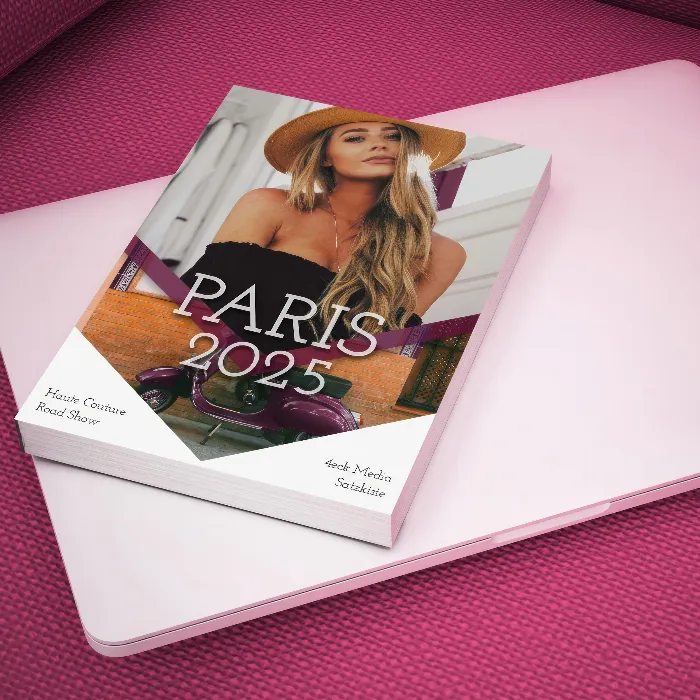If you work with Adobe InDesign, you know how important it is to manage your styles quickly and efficiently. Often, you import texts from Word, which can bring additional challenges. In this guide, you'll learn how to effectively edit and optimize your styles despite these challenges.
Key Insights
- Deleting formatting deviations is important for keeping your layout clean.
- Using keyboard shortcuts can significantly increase your efficiency while formatting.
- The "Quick Apply" feature allows you to adjust styles in no time.
Step-by-step Guide
To simplify the process of formatting in Adobe InDesign, follow these steps:
To begin, you should check the existing styles and remove any that are not needed. There are often styles that you have received from imports via Word, which you can delete without hesitation. Start by removing styles such as "Numbering" or "Italic" that are irrelevant for your current project.
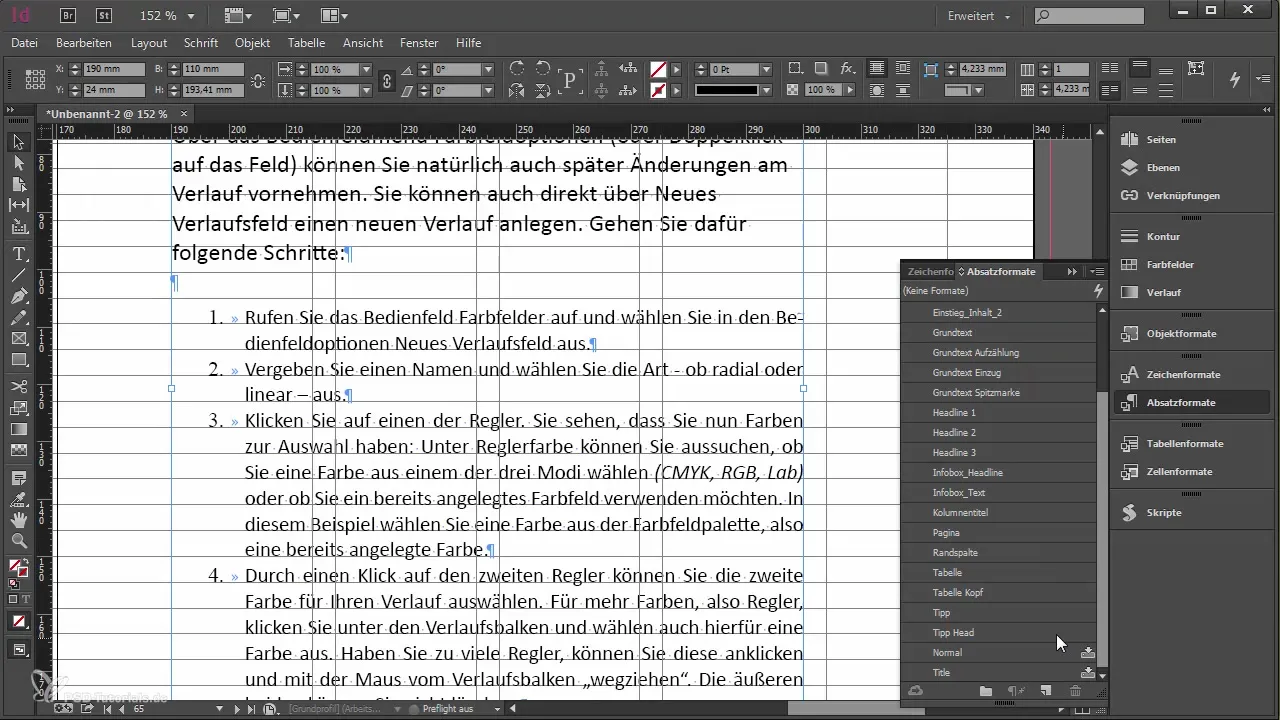
Now, highlight all the text in your document. Go to the paragraph styles window and look for the option "Delete Deviations". This step is crucial as Word imports often carry formatting deviations that you'll need to clean up manually later. Simply deleting the deviations will save you a lot of time.
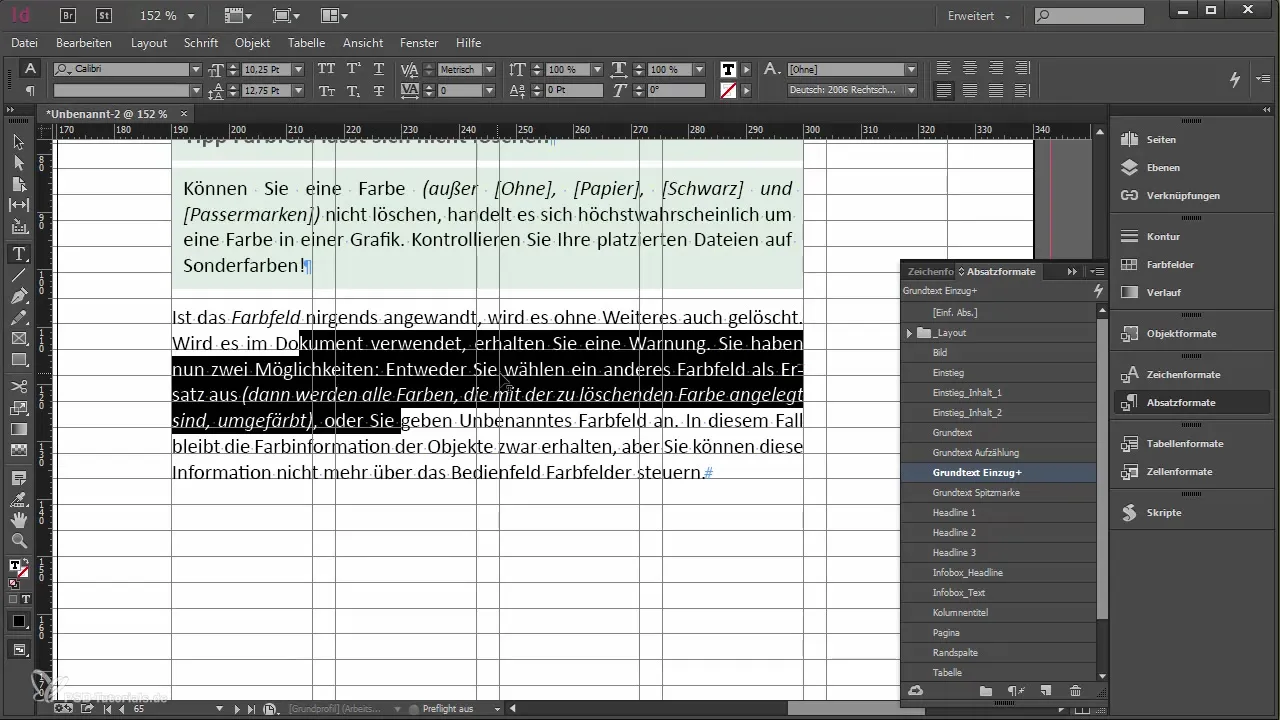
A common problem when importing texts from Word is anchored objects. These can disrupt the layout. To avoid that, go through the text frames, click into each text section, and copy the content before deleting the text box. Then, paste the text into the correct frame settings in InDesign to optimize the layout.
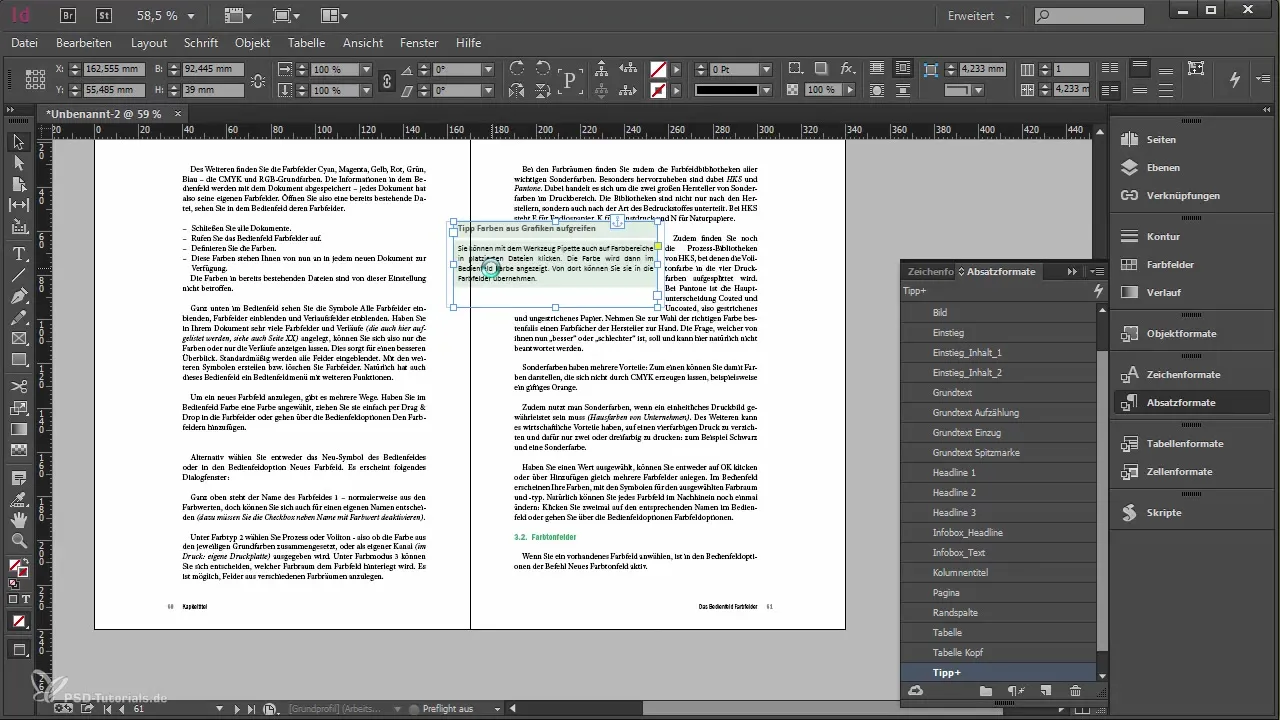
There are still some styles that you need to assign manually to achieve a cohesive layout. Especially after headings, make sure to select the correct paragraph style, in this case, the "Body Text No Indent". To do this, simply be in the section of the text and select the style.
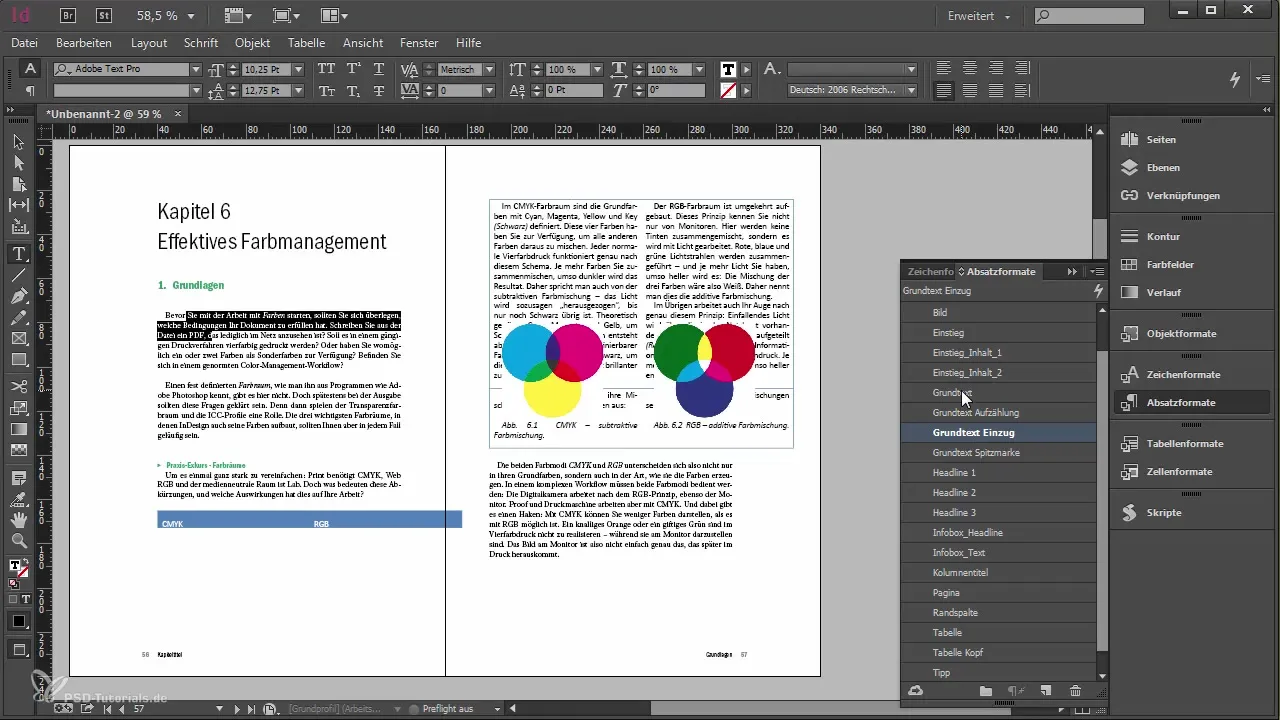
To further simplify the workflow, it makes sense to create keyboard shortcuts for frequently used paragraph and character styles. You can do this by double-clicking on your style in the panel to access the options. There, you have the opportunity to enter a keyboard command. The combination of Control, Alt, and Shift along with numbers can help you quickly assign styles.
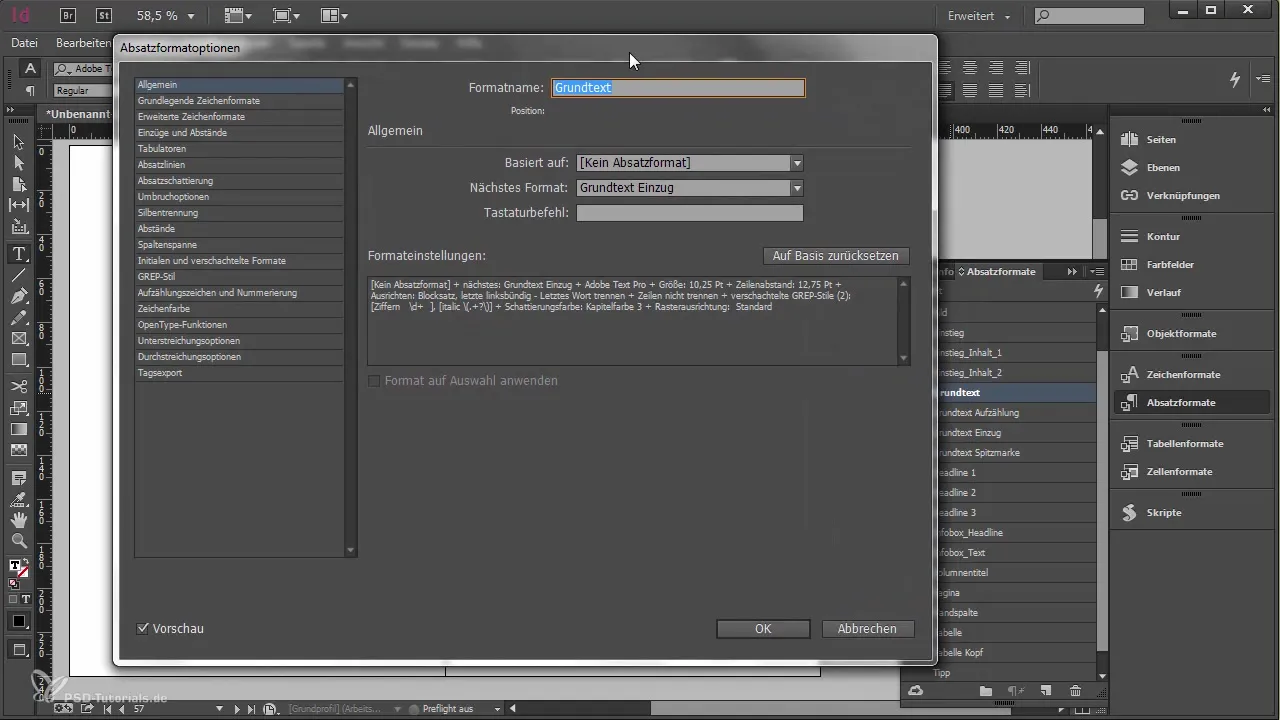
Make sure that the keyboard shortcuts you use remain consistent. If you frequently work on different chapters with other colleagues, it's helpful to use uniform shortcuts. A good way to store these is by using a template where these shortcuts are already set.
Another practical way to assign styles is the "Quick Apply" function. You can easily access this by pressing Control and Return. This opens a new window where you can search for your desired style. This is especially useful when you want to quickly switch between different styles.
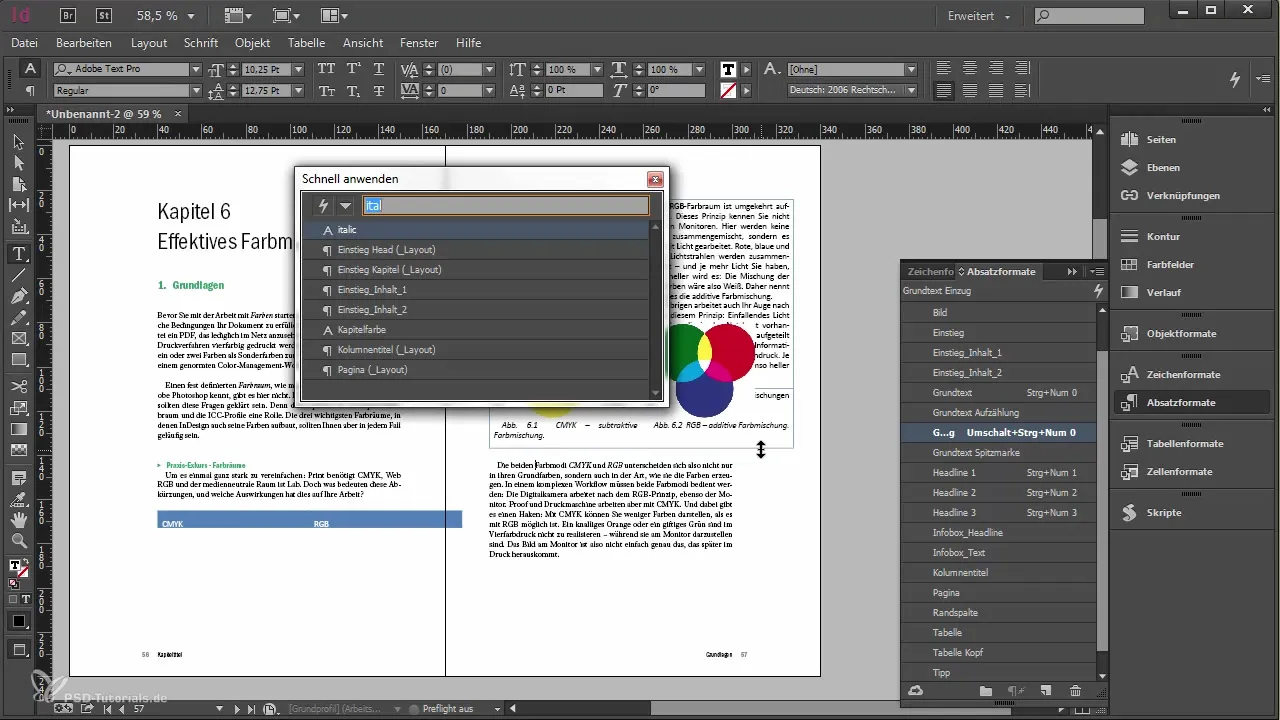
Once you have opened the "Quick Apply" window, InDesign remembers the last formatting you applied. This way, you can work more efficiently, as you do not need to continuously search for the same style.
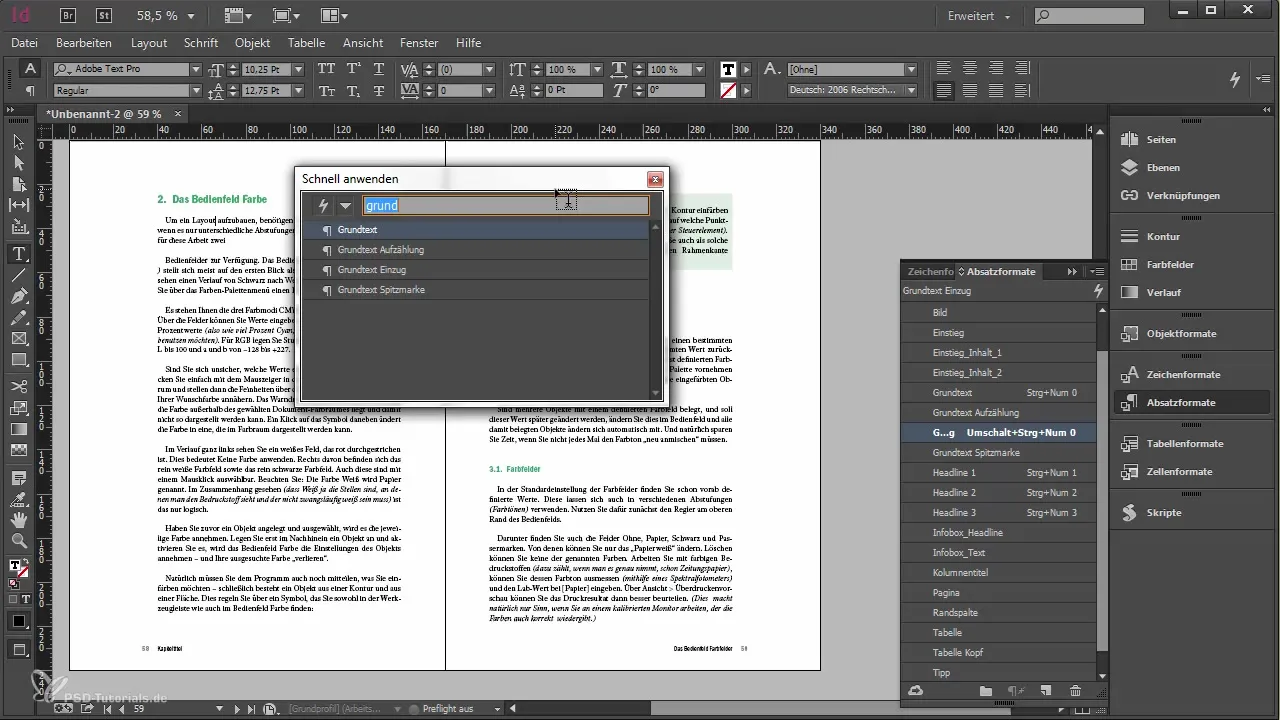
It is also worth adjusting the settings of the "Quick Apply" window. You can select which styles should be displayed. By disabling unnecessary options, you focus on the important styles and thus work even more effectively.
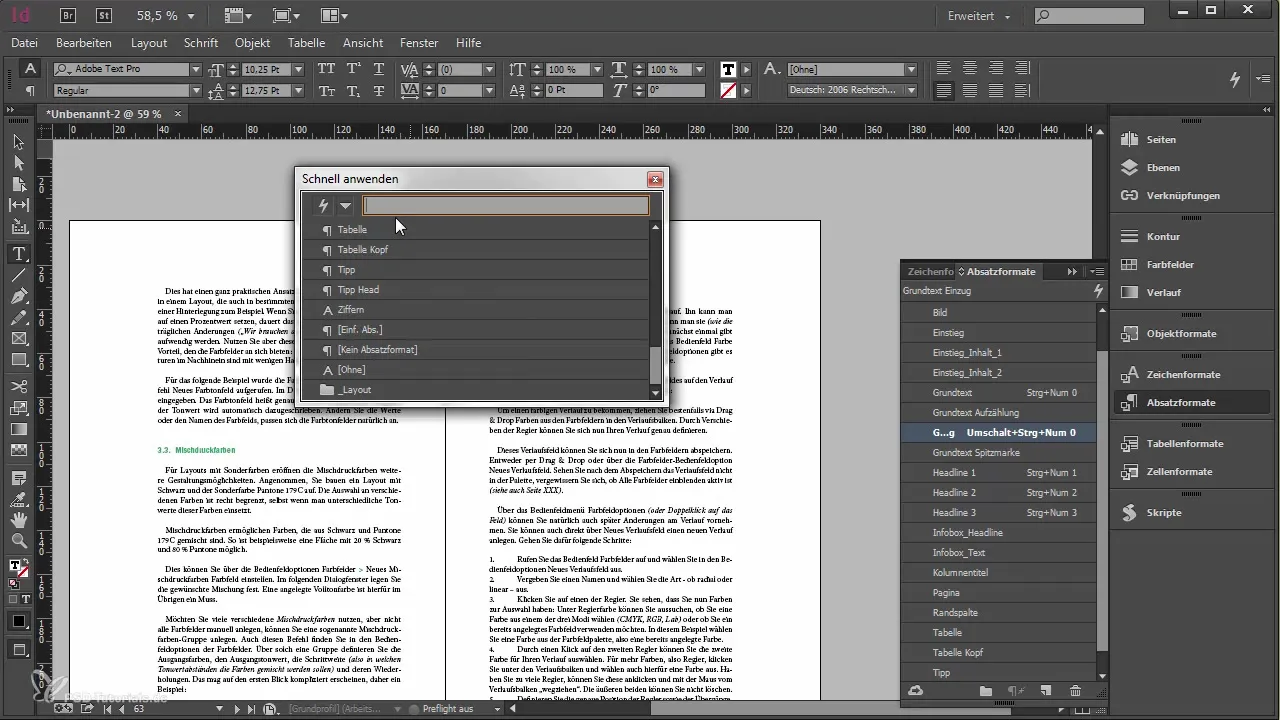
With these steps, you should be able to present your document clearly and professionally. When you refine your micro typography and use appropriate special characters, your layout will become even more appealing and professional.
Summary - Great Overview of Quick Formatting in Adobe InDesign
You have now learned the key techniques for quick and effective formatting in Adobe InDesign. The combination of manual assignment, keyboard shortcuts, and the "Quick Apply" function offers you much flexibility and efficiency in your workflow. Create a structured document that stands out with its clarity and arrangement.
Frequently Asked Questions
How do I delete formatting deviations in InDesign?You need to highlight the entire text and choose the "Delete Deviations" option in the paragraph styles window.
How can I create keyboard shortcuts in InDesign?Double-click on the style, go to the options, and enter your desired shortcut.
What is the "Quick Apply" function?A practical feature to quickly search for and apply styles by pressing Control and Return.
How does removing anchored objects lead to a better layout?Anchored objects can disrupt the layout; it is better to copy the text and paste it in a new text frame.
Does the use of keyboard shortcuts concern multiple people?Yes, it makes sense to agree with colleagues on uniform shortcuts to facilitate collaboration.
